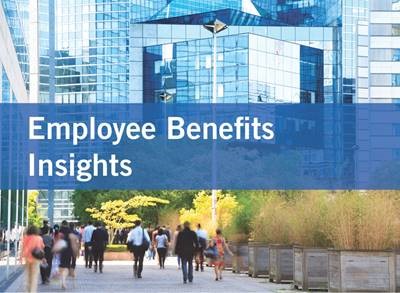IRS and DOL Clarify Extended Deadlines for Benefit Plans and Encourage Employer Notices

Last year, the Internal Revenue Service (IRS) and the Department of Labor (DOL) issued two notices that extended certain benefit plan deadlines for both employees/plan participants and for plan administrators as a result of the COVID-19 national emergency (the “Original Notices”). A link to our article about these deadlines can be found here.
The Original Notices stated that, when determining the deadline for certain benefit-related actions, such as a HIPAA special enrollment or a COBRA election, the period from March 1, 2020 until 60 days after the end of the national emergency (the end of such 60-day period is referred to as the end of the “Outbreak Period”) should be disregarded. As an example, an employee whose COBRA election deadline was March 15, 2020 (15 days after the extension went into effect) would have until 15 days after the end of the Outbreak Period to make their COBRA election.
Embedded within the law that authorizes the IRS and DOL to delay these deadlines was a 1-year time limit. It was unclear how that limit applied, and some thought that the 1-year limit meant that the entire extension expired on February 28, 2021. Late last week, in EBSA Disaster Notice 2021-01, the DOL and IRS clarified that this is not the case. Rather, each individual deadline, determined on a per person basis, is subject to a 1-year time limit. So, using the same example above, the individual whose COBRA election was due on March 15, 2020 has a COBRA deadline of March 15, 2021. In sum, then, a particular deadline is determined by ignoring the Outbreak Period as described in the Original Notices, but in no event will any deadline be extended beyond 1 year.
In addition to this clarification, the DOL stated that plan fiduciaries may have a duty to notify individuals that a deadline is upcoming, if the fiduciary is aware of the deadline, and may need to revise prior notifications that did not clearly indicate how the extension – including the newly discussed 1-year time limit – applies to a particular deadline. This is in stark contrast to the Original Notices, which were silent about notification obligations.
What does this mean for plan sponsors?
- Update and re-distribute any participant notices that describe the COVID-19 extension to add the 1-year outside deadline. This may include summary plan descriptions, enrollment materials, COBRA elections, and explanations of benefits or “EOBs” (which include deadlines to file an appeal), to name a few.
- Consider making targeted communications to those individuals whom you know have a deadline pending. For example, you may not know that an employee got married last March, and thus you have no idea that their HIPAA special enrollment deadline to enroll their spouse in your health plan is fast approaching. However, you do know how many COBRA notices you sent and thus could update those individuals with a subsequent notice about the 1-year outside time limit.
- Consider, for anyone whose deadline is occurring in the next week or two, providing a short additional extension for them because they were unlikely aware of the outside 1-year time limit. Of course, if the special extension impacts a fully-insured plan, you will need to get the consent of your insurance carrier before you offer this.
 |
As part of Foley’s ongoing commitment to provide legal insight to our clients and colleagues, our Employee Benefits and Executive Compensation Group has a monthly newsletter we call “Employee Benefits Insights,” where we provide you with updates on the most recent and pressing matters concerning employee benefits and other related topics. Click here or click the button to the left to subscribe. |


